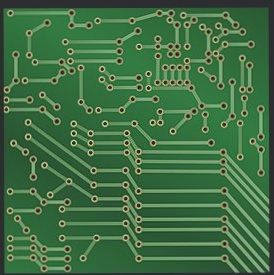The Impact of Filament Choice on 3D Printing
In the dynamic realm of 3D printing, selecting the right filament is crucial for achieving top-notch quality, durability, and functionality in your printed creations.
There isn’t a one-size-fits-all solution when it comes to filaments; instead, different projects call for specific filaments tailored to their unique demands.
While Polylactic Acid (PLA) and Polyethylene Terephthalate Glycol-modified (PETG) were once dominant, the surge in enclosed 3D printers has piqued interest in materials previously deemed challenging for open-format printers.
Among these materials are ABS (Acrylonitrile Butadiene Styrene) and ASA (Acrylonitrile Styrene Acrylate). Although these filaments share similarities, their distinct properties render them ideal for varied applications.
Let’s delve into a comparison between ABS and ASA filaments to aid you in making an informed choice for your next 3D printing endeavor.
ABS: The Trusted Choice
Despite being viewed as somewhat outdated in the age of PLA, ABS remains a favorite among 3D printing enthusiasts. Widely used in injection molding and traditional manufacturing, this polymer is renowned for its robustness, flexibility, and ability to withstand high temperatures.
As a petroleum-based thermoplastic, ABS boasts durability and cost-effectiveness, making it a popular option across diverse applications. Its ease of post-processing, including sanding and vapor-smoothing, makes it perfect for projects necessitating refined finishes or intricate details.
Advantages:
- Durability and Strength: ABS is recognized for its toughness, ideal for parts enduring mechanical stress or wear.
- Thermal Resistance: With a high melting point, ABS can endure elevated temperatures without distortion, suitable for heat-exposed objects.
- Post-Processing Convenience: Easily sanded, acetone-smoothed, and painted for superior finishes.
Disadvantages:
- Warpage: Prone to warping or shrinking during cooling, requiring careful management to prevent print deformities.
- Ventilation Needs: Emits noxious fumes while printing, necessitating good ventilation or a carbon pellet filter for safety.
- Printer Requirements: Demands a heated bed and enclosed print area to mitigate warping tendencies.
ASA: The Emerging Contender

ASA shines as the go-to option for outdoor applications!
While ASA may not be as familiar as ABS, it is gaining traction as a robust alternative, especially for outdoor usage. A copolymer of ABS, ASA shares many strengths with its counterpart but offers added benefits, notably in UV resistance and weather endurance.
ASA’s ability to endure prolonged sun exposure and outdoor elements without color fading or material deterioration positions it as an excellent choice for outdoor ventures. It also boasts higher impact resistance, strength, and heat tolerance compared to ABS.
Advantages:
- UV Resistance: Highly resilient to UV rays, preventing sun-induced discoloration and material damage.
- Printability: Less prone to warping and emits fewer fumes than ABS, simplifying certain aspects of printing.
- Weather Endurance: Greater resistance to water, chemicals, and environmental factors than ABS.
- Aesthetic Appeal: Yields smoother prints with fewer visible layer lines and offers a broader color range.
- Strength: Slightly superior to ABS, especially in impact resistance (though not as robust as Nylon).
Disadvantages:
- Printability: While easier to print in some aspects, ASA presents challenges due to its higher melting point and lesser adhesion to the print surface compared to ABS.
- Cost: Typically pricier than ABS, which may influence decisions for large-scale or budget-conscious projects. However, this cost dynamic could evolve with increasing production volumes.
- Ventilation: Although ASA emits fewer fumes compared to ABS, proper ventilation is still crucial to ensure a safe printing environment.
Ventilation Tips for 3D Printing with ASA Filament

Comparing ABS and ASA for Your Projects
When choosing between ABS and ASA filaments, it’s essential to consider your project’s specific requirements. ABS is ideal for indoor applications needing strength and flexibility, like prototypes, gears, and automotive parts.
On the other hand, ASA’s UV and weather resistance make it perfect for outdoor use, such as garden tools, automotive exterior components, and signage requiring long-lasting color stability.

Studies by Stratasys engineers have revealed that ASA boasts slightly better tensile strength, inter-layer adhesion, and IZOD impact resistance than ABS.
Important Printing Factors to Consider
Both ABS and ASA demand precise temperature control during printing. A heated bed is necessary to prevent warping, and an enclosed printer helps maintain a consistent temperature. ABS typically prints between 220°C and 250°C, while ASA prints at slightly higher temperatures, around 235°C to 260°C.
ABS adheres well at bed temperatures of 80-100°C, while ASA performs best at 90-110°C and may require glue stick or hairspray for improved adhesion.
Health and Safety Measures
Although ASA emits fewer fumes than ABS, both filaments can release harmful emissions when overheated. It’s vital to use them in well-ventilated spaces or with a filtration system. If using a carbon pellet filter, ensure regular replacement as the pellets can saturate quickly.

Final Thoughts
ABS and ASA filaments each have unique benefits for 3D printing. ABS shines in strength, post-processing ease, and cost-effectiveness, while ASA excels in outdoor durability, UV resistance, and weather resistance.
The choice between ABS and ASA depends on factors like environmental exposure, durability needs, budget constraints, and desired finish quality. Both filaments offer valuable options for 3D printing enthusiasts and professionals.
About The Author:
Jonathan Levi, a renowned YouTuber and 3D printing expert, founded The Next Layer in 2022. Check out his YouTube channel for exciting 3D printing projects and product insights.
For any inquiries about PCBs and PCBA, contact Jonathan at info@wellcircuits.com.




